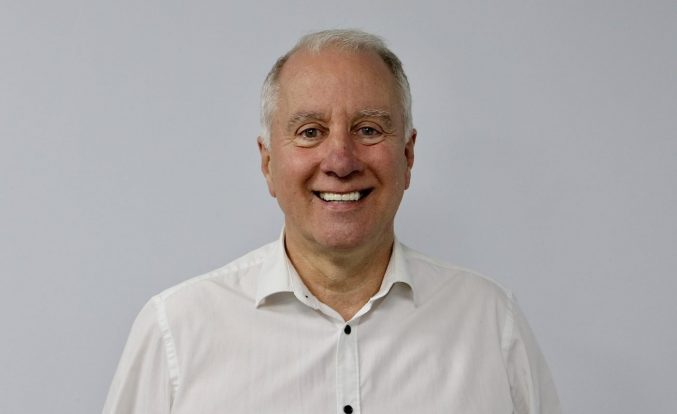‘We have the passion and commitment to keep supporting the broker market’
By David Craik

For many, a 70th birthday may be a time for reflection and a well-deserved rest. But for United Trust Bank, launched in the Elvis and Corvette era of 1955, it is getting ready to ‘put its foot on the gas’ and take advantage of a potential industry revival.
Sundeep Patel, Director of Bridging at United Trust Bank (UTB) since November 2022, says last year was a ‘topsy-turvy one’ for the industry but he is already seeing green shoots of recovery in the property market.
“The uncertainty was as a result of the macro-economic backdrop with higher interest rates and inflation,” says Patel.
“The bridging market is resilient and UTB showed its mettle by delivering strong originations, roughly in line with 2022, and given the instability throughout last year I consider that a good result. 2024 may be slightly better, with some signs of stability re-emerging.
But I believe the real growth will come in 2025 with lower inflation, potentially lower interest rates and a recovery in property transaction numbers. That, more than house prices, is the biggest indicator of any returning market optimism for lenders.”
UTB, which is funded by a successful Deposits business providing a range of competitive savings accounts and ISAs to UK retail and corporate savers, has a deep knowledge of and experience in lending.
Back in the fifties it began life as a specialist lender mainly providing development finance to SME housebuilders as they tackled the post-war housing shortage.
Today its offerings include regulated and unregulated residential and commercial bridging, property development finance, structured property finance, asset finance and specialist residential mortgages, second charge loans and Buy-to-Let mortgages.
Since 2004, when Graham Davin, Harley Kagan and Roger Tydman led a management buy-out of the Bank, its loan book has soared from around £10million to £4billion today. Employee numbers have grown from 10 people to just over 400.
Patel says that innovation in products and services as the years have passed have played a huge role in this significant growth.
Further changes – a series of extra foundations – have been put in place both last year and early this year – to set it up for that anticipated surge in demand in 2025.
This January, for example, the bank extended its bridging lending reach to cover all of mainland Scotland.
“Last December as part of a market research plan we held a dinner in Scotland and talked to our lending partners there,” says Patel. “We discussed the market, what competitors were doing and what would best benefit them.
We realised that both the lending appetite and demand was there, so it was a great time to expand. It’s a country with great potential for bridging growth.”
To aid the move, also in January, UTB cut the minimum size for bridging loans for both first and second charge loans from £125,000 to £100,000. In addition, it cut monthly interest rates across regulated and unregulated bridging finance products by up to 0.14%.
Regulated bridging loan rates were available from 0.72% and unregulated loans from 0.75% for Standard and Light Refurbishment products, and 0.85% for Heavy Refurbishment products.
“We know that typically loan sizes are smaller in the North of the country than the South,” explains Patel.
“Our average loan size is £500,000 with the bulk of the business being completed in the South East of England.
So, by lowering the loan size we hope to tap further into the opportunities, not just in Scotland but in other regions outside of London and the South East. But even in London we see huge opportunities.
The appetite for higher value property is returning with London especially seeing loans above £ 2 million.
That has really picked up as has demand for our heavy refurbishment product from both experienced and inexperienced landlords.
People are accepting that house prices are where they are. As a bank we feel more confident in the direction of the property market.”
These changes followed other moves at the end of 2023 to increase the maximum LTV for first charge standard bridging loans from 70% to 75% and UTB’s creation of two separate and appropriately skilled underwriting teams to manage regulated and unregulated bridging proposals.
“We carried out the split because unregulated deals require a more enhanced skill set and can be more complex than regulated,” says Patel.
“We have also split our product portal allowing us to price both regulated and unregulated separately.
They are different deals, have different credit appetites and commercial mindsets. It will really help us better benchmark our performance against the market.”
Another vital step has been the Bank’s decision to join the Bridging Loan Directory.
“We are already recognised as a strong and reliable brand and trusted partner amongst brokers. But we are always keen to gain more exposure,” Patel says.
“We know after the recent instability that having that trust as well as our heritage, wisdom and experience is important to brokers. Brokers know that we are accessible and transparent.
We are consistent, not adjusting a deal halfway through or near completion. We are also fair and competitive on price and product range and have an above average conversion rate in the market.
Innovation and technology have their place, but we believe our USP is keeping things simple.”
Providing a prompt service is also crucial. Back in 2020 UTB launched a ‘Fast Track’ service for bridging applications.
Supported by a dedicated team, brokers are able to create their own Terms, DIPs and ESIS using UTB’s self-service broker Portal, or liaise with the in-house UTB Fast Track team.
It utilises some of UTB’s existing FinTech solutions and unique services such as Biometric ID verification, AVMs and dual legal representation, to progress the application to offer and drawdown quickly and easily.
“We have completed cases that were funded in eight working days,” says Patel. “It all depends on the quality of the application and having a viable exit plan or income to support a refinance.”
Some matters are out of the lender’s control such as the legal and planning processes. Patel says a number of bridging lenders are concerned about the slow speed solicitors take when it comes to dealing with bridging loan applications.
“The legal process in the UK is quite dated and some innovation there would be helpful. We work with solicitors who really understand the bridging world and that really helps,” he says.
UTB also recently published research showing that the time taken for SME housebuilders to achieve an outline planning permission has increased significantly from around 13-14 weeks in the 1990s to a whole year in 2023.
“These are challenges which have been baked in the system for some time,” Patel explains. “The planning system certainly needs an overhaul to support SME housebuilders who are vital to the delivery of the new homes the UK desperately needs.”
But there is little that can dampen Patel’s optimism about the direction the property market, as a whole, is taking.
“I still believe 2024 will be challenging but we have done a lot of restructuring and are in a great place for the recovery which we already see getting underway,” he says.
“We have the passion and commitment to keep supporting the broker market and help them benefit from a brighter outlook and a more stable lending environment.”










You must be logged in to post a comment.